Did you know that it is possible to create compost for gardening in less than a month? The “trick” is to use the right ingredients in correct proportions.
If done properly, compost is an excellent growing media and soil amendment. It also lessens the amount of organic waste that reaches landfills, benefiting everyone involved.
That said, compost lasts only a couple months in the soil, especially here in the tropics, where it seems to melt away. As a result, it is necessary to learn how to make compost to ensure a steady supply.
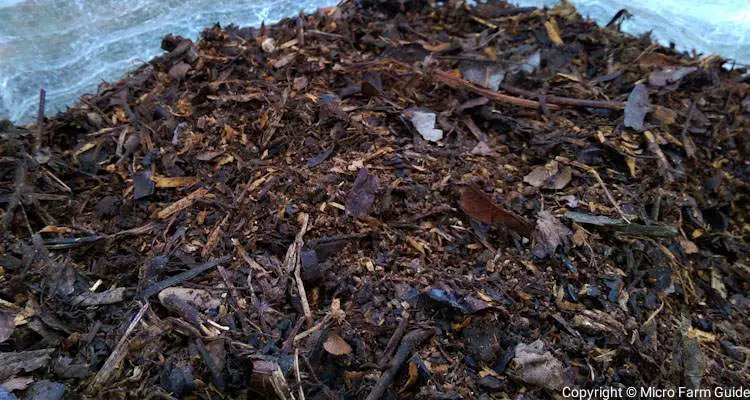
In this article, you will learn:
- The 3 Main Types Of Composting
- What You Can Add To Compost
- What You Should Not Add To Compost
- How To Make Compost At Home (Step By Step)
- How To Make A Simple Compost Bin
- How to Use Compost In The Garden
Let’s get started!
The 3 Main Types Of Composting
Composting is the natural process of breaking down organic waste into valuable organic material through the use of fungi, bacteria, and small animals.
There are three main types of composting: aerobic, anaerobic, and vermicomposting.
Aerobic Composting occurs in the presence of oxygen, while Anaerobic Composting does not. Vermicomposting also happens in the presence of oxygen but relies on worms and other small creatures to do the work.
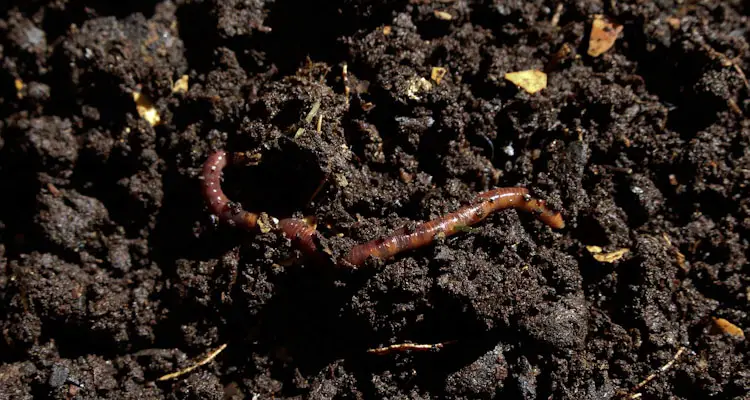
Aerobic composting has been the go-to method for home and commercial production in western countries. As a result, we will use it as an example in this brief introduction.
However, in recent years, there has been renewed interest in Korean and Japanese techniques such as Bokashi since they work great in smaller spaces like apartments.
What You Can Add To Compost
You can compost almost any organic material using the appropriate method and materials.
The main ingredients for aerobic composting are air, water, and organic materials. These include, but are not limited to, the materials listed below.
| Nitrogen-Rich Materials (Greens) | Carbon-Rich Materials (Browns) |
| Grass Clipping | Shredded Paper And Cardboard |
| Fruits And Vegetable Scraps | Dry Leaves |
| Weeds And Wild Plants | Sawdust From Untreated Lumber |
| Eggshells | Wood Chips |
| Coffee Grounds | Straw |
| Used Tea Bags | Paper Filters |
| Manure | Dry Corn Stalks |
| Uncooked Kitchen Waste | Twigs, Tree Bark, |
| Seaweed | Dry Coconut Husk, Nutmeg Shells, etc. |
What You Should Not Add To Compost
Most organic items are easy to compost if you have the facilities. However, there are some items you should avoid when composting at home since they tend to attract flies, rodents, and other animals to your pile.
These include meat, bones, dairy, cooked food, citrus peels, dog and cat feces, greasy foods, oil, onion peels, and other highly scented organic materials.
For such material, you should consider an anaerobic composting method such as Bokashi, which can process virtually any material while producing little to no smell. The fermented material can then be buried in your garden bed or added to a vermicompost bin.
How To Make Compost At Home (Step By Step)
In nature, composting can take several months or even years. Yet, it is possible to speed up this process by providing suitable conditions.
This tutorial will look at the simplest way to make compost at home. You can then use the compost bin of your choice and scale your system based on your needs and available material.
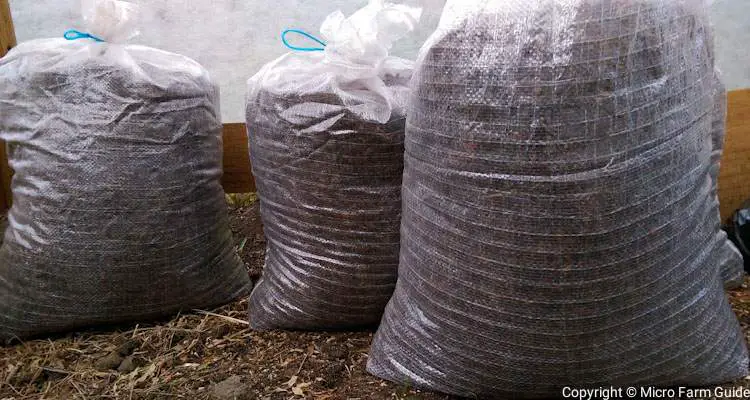
1. Collect Material For Compost
You can start collecting dried leaves, newspapers, cardboard, and other “brown materials” in bulk. You can store these in garbage bags for later use.
Next, identify your “green material” source, such as kitchen scraps, grass clippings, coffee grounds, seaweed, etc.
Usually, brown materials are challenging to find, especially during the growing season, so I like to collect these throughout the year.
This allows me to lessen the time I need to store the green material, which tends to go sour and attract flies if left outside the fridge.
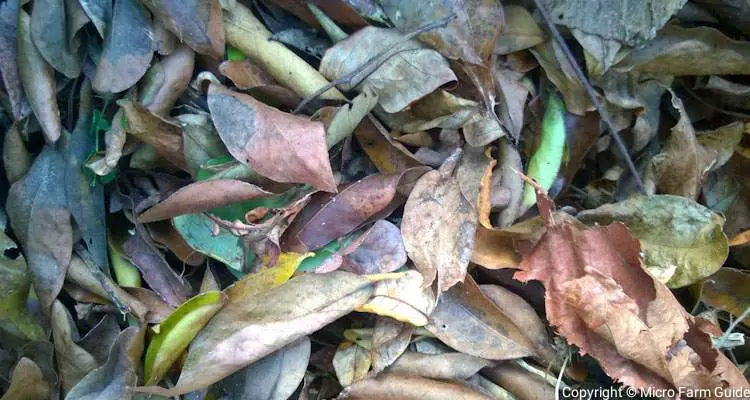
2. Combine Green And Brown Material
Find a shaded location in your garden to set up your compost pile. Use a compost bin if space is limited or you want to keep things neat.
Start your pile by adding a layer of brown material, then a layer of green, alternating as you build.
It is recommended to add the same amount of green and brown materials. Still, I prefer adding more brown materials to ensure the compost does not smell.
Sprinkle some finished compost, animal manure, or urine as you layer your material. This will add beneficial microorganisms to your pile and help speed up the process.
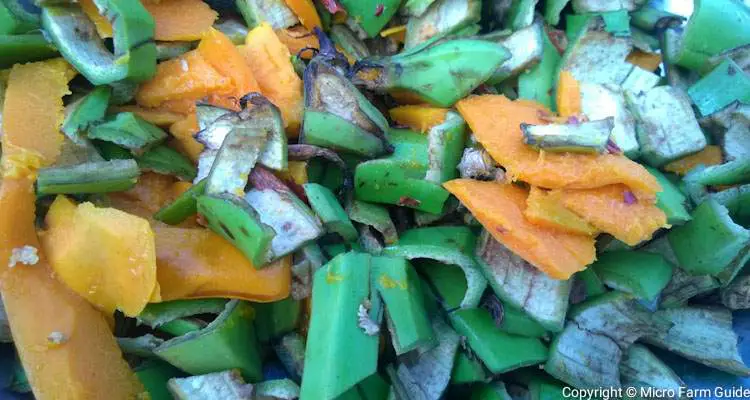
3. Water Your Compost Pile
Add water to the compost pile to ensure it is moist. Remember, moisture is one of the main ingredients in the composting process.
However, this is sometimes unnecessary if the material is already wet or will be covered since the green materials will produce a lot of moisture.
Protect your compost piles from rain or excess water by covering them with a tarp or lid.
4. Turn Compost Pile
Turning a compost pile helps to reintroduce oxygen to the process, which helps to speed it up and prevent the materials from becoming rancid.
Generally, it is best to turn a compost bin when the inner-core temperature drops. This indicates that the composting process has slowed down or is complete. The exact time will vary from one method to the other.
For example, you must turn a hot compost pile on day four and every other day until it no longer heats up. While a more passive pile has to sit at least 2 weeks before turning and once per week afterward.
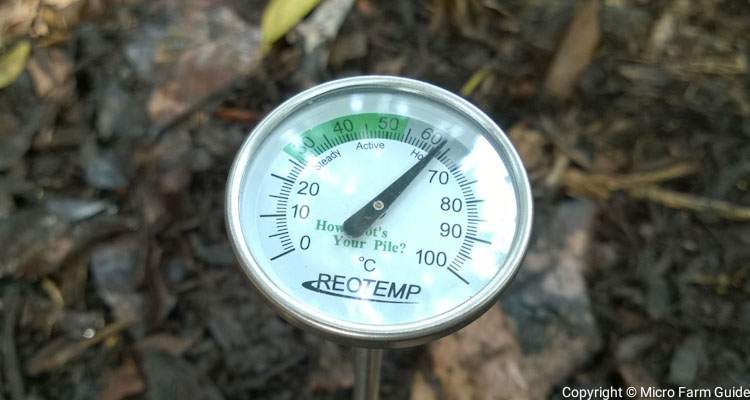
You can confirm the exact time using a compost thermometer, which can help you monitor the changes without unnecessarily disturbing the pile.
Turning a compost pile too often can disturb the process and slow it down considerably. So as a general rule, you should wait until the pile cools down or turn it once every week or two.
5. Apply Compost To Garden
Compost is complete when it has an earthy scent and the material no longer looks like the original items. At this point, you can apply it directly to the garden. However, if we have the time, we prefer to allow the compost to age for at least another month.
Generally, you can apply compost as a top dressing to the soil or use a rake to mix it into the top inch of the soil. You can also use it to brew compost tea, which can be used as a foliar application.
Compost can be mixed with old soil or other material to revitalize potting soil. In essence, you can create a soil factory at your home and produce an unlimited supply of potting mix for your container garden.
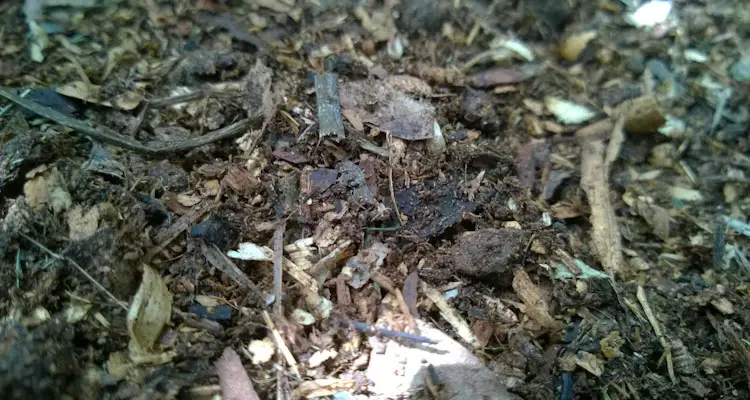
How To Make A Simple Compost Bin
A compost bin is a means to contain the materials that you are using. Ideally, it should keep rodents and large animals out while allowing air, worms, and microorganism in.
You can make a compost bin using various materials, including wire mesh, pallets, trash cans, buckets, or just about any container you can find.
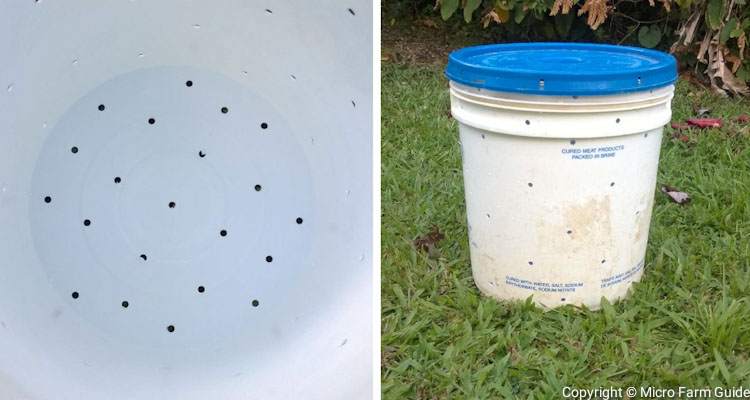
For example, by drilling holes into a 5-gallon bucket or 32-gallon trash you can make a simple compost bin suitable for a small space, such as an apartment.
The exact dimensions of the bin will depend on the composting method and the available space.
For instance, I usually build a makeshift compost bin using mesh wire for hot composting. I use about 13 feet of 3 feet wide chicken wire to meet the minimum size, with the extra few inches for overlap.
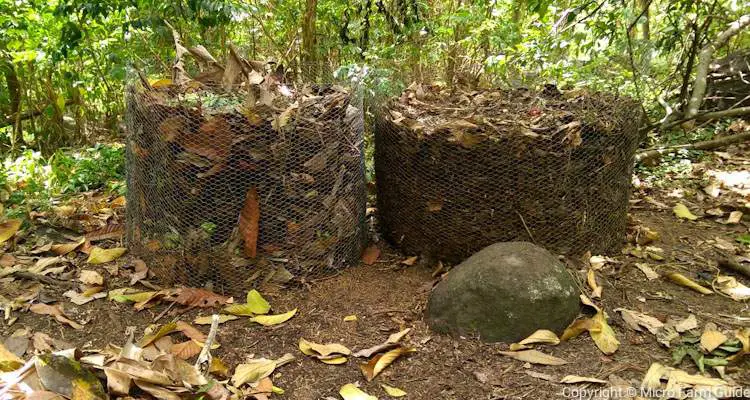
Alternatively, you can use pallets or dig a compost pit and fill it with materials over time.
You should also see if you can get a free compost bin from your city council or waste management company. These are usually made available to minimize organic waste sent to landfills.
How to Use Compost In The Garden
Compost can take 21 days to 1 year to be ready, depending on the temperature and the method used to create it.
Ideally, it would be best to use a sieve to separate the fine compost from the larger material. You can re-add these larger pieces to a new compost bin to speed up the process.
Compost can be applied directly to the garden as a mulch or mixed with various growing media, including soil, potting mix, sand, etc.
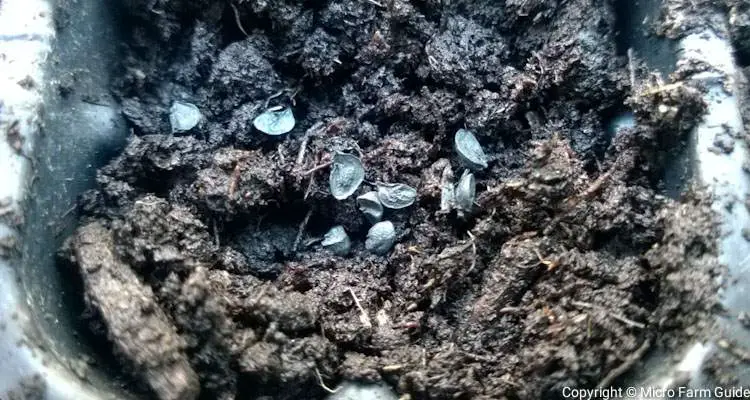
You can use compost to start seeds or even grow plants directly. Reportedly, most plants grown in well-prepared compost grow larger and faster than those in the soil.
This can be expected since compost is loosely packed and full of nutrients and microorganisms, providing ideal conditions for root development and a well-balanced nutrient supply.
Well-prepared compost is safe for plants to touch or even grow in. However, composting using an inappropriate method for the given material can result in various diseases.
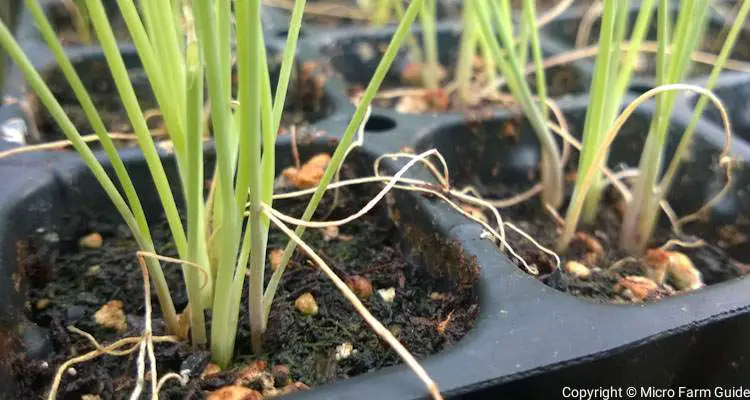
As a result, many gardeners choose Hot Composting, since the high temperature created during the process can kill most disease-causing organisms and weed seeds.
Ideally, you should create or collect as much compost as possible and use it as your primary growing media. You can use it in pots or build 4 to 6-inch raised beds and fill them with compost mix with extraordinary results.
Composting is at the heart of our micro-farms, providing an unlimited supply of the nutrient-rich media we need to grow various fruits, herbs, vegetables, and flowers year-round. How about giving it a try?
Related Questions
What Is Good Compost For A Garden?
A good compost for gardening should contain an assortment of organic material from various sources, including food scraps, manure, and vegetation from land and sea. It can also be amended with mineral sources such as fine rocks or dust to complete its profile.
Can You Put Compost Directly In The Garden?
You can put compost directly in the garden by mixing it as a soil amendment or mulch. Alternatively, you can compost directly in the garden by creating a compost pit.
When Should I Apply Compost To My Garden?
You should apply compost while preparing the soil for new crops. This is essential, especially when following a heavy feeder like tomatoes or peppers. You can also use it as a side dressing for container and long-season crops.
What Kind Of Compost Is Good For A Vegetable Garden?
An aged compost made from manure, kitchen scraps, leaves, and yard waste is excellent for a vegetable garden. It provided a neutral, nutrient-rich environment where plants would thrive without worry of soil-borne diseases.
What Is The Difference Between Manure And Compost?
The difference between manure and compost is the origin of the main components. Manure is primarily animal feces and may include urine and bedding. While compost consists mainly of decomposed plant material, but may also have other sources.
How Long Should Compost Sit Before Planting?
Compost should sit at least 4 weeks before planting. During this time, you must protect it from excess water and turn it at least once weekly. This will keep the microorganism active and ensure that the process is complete.
